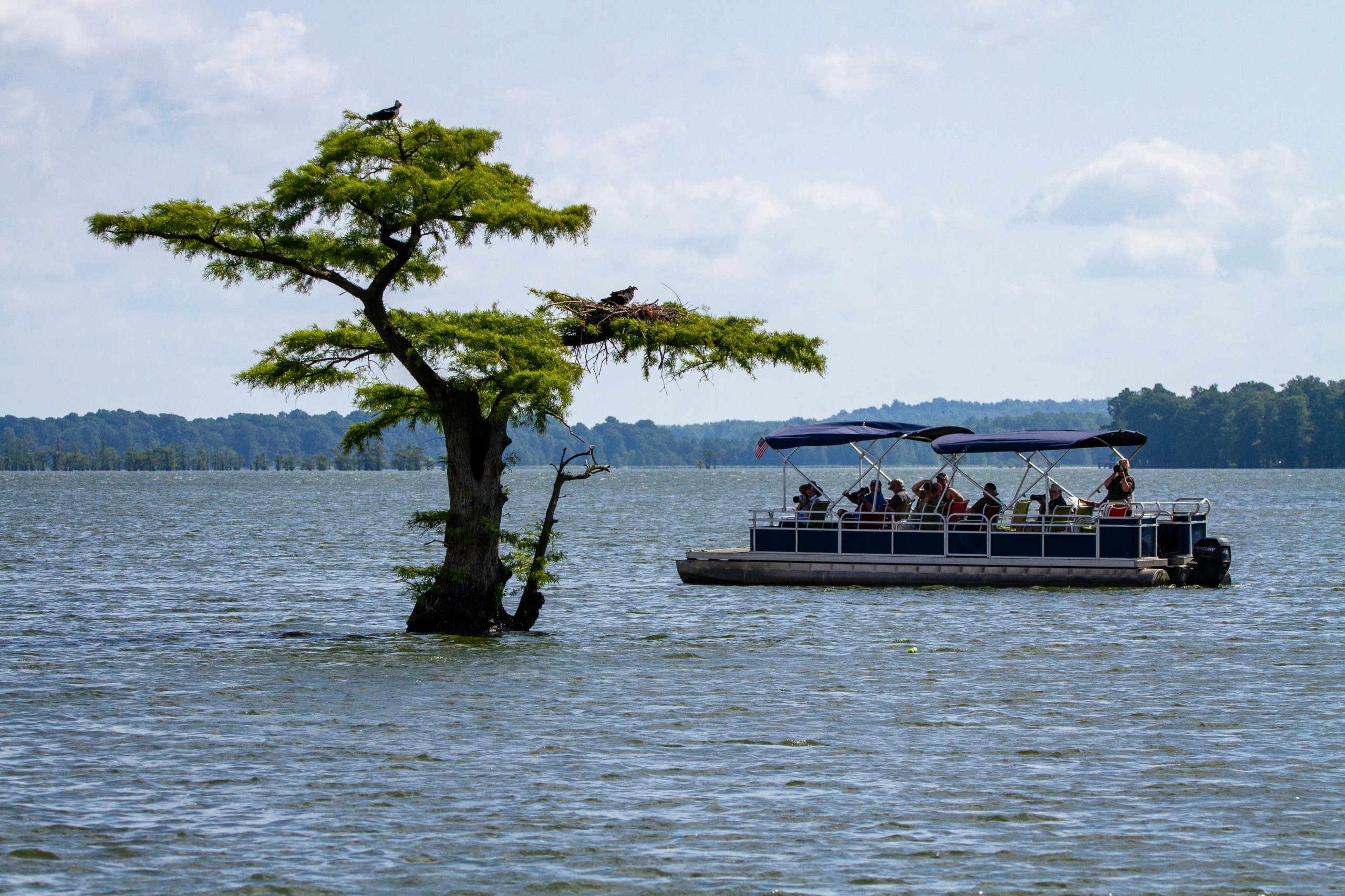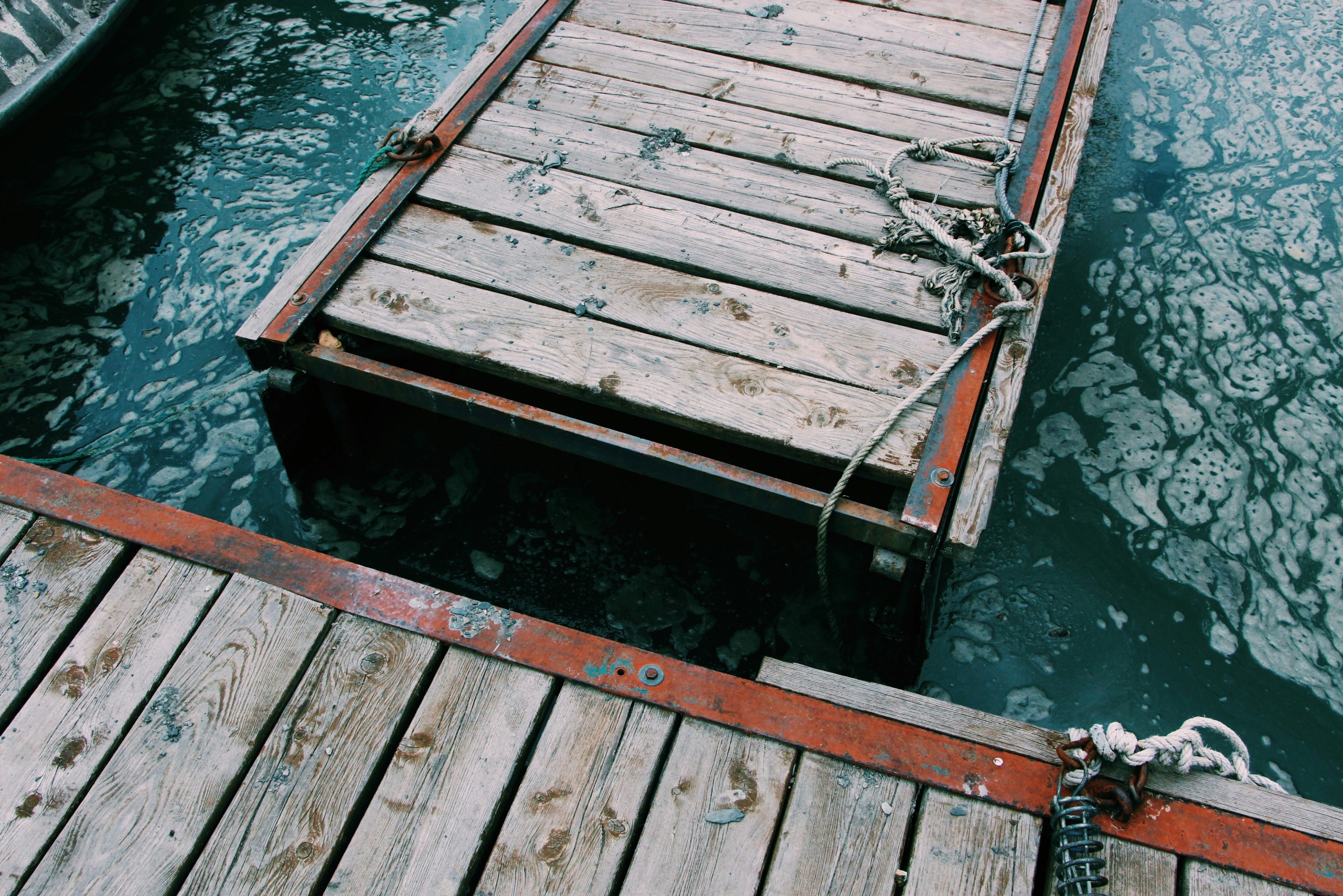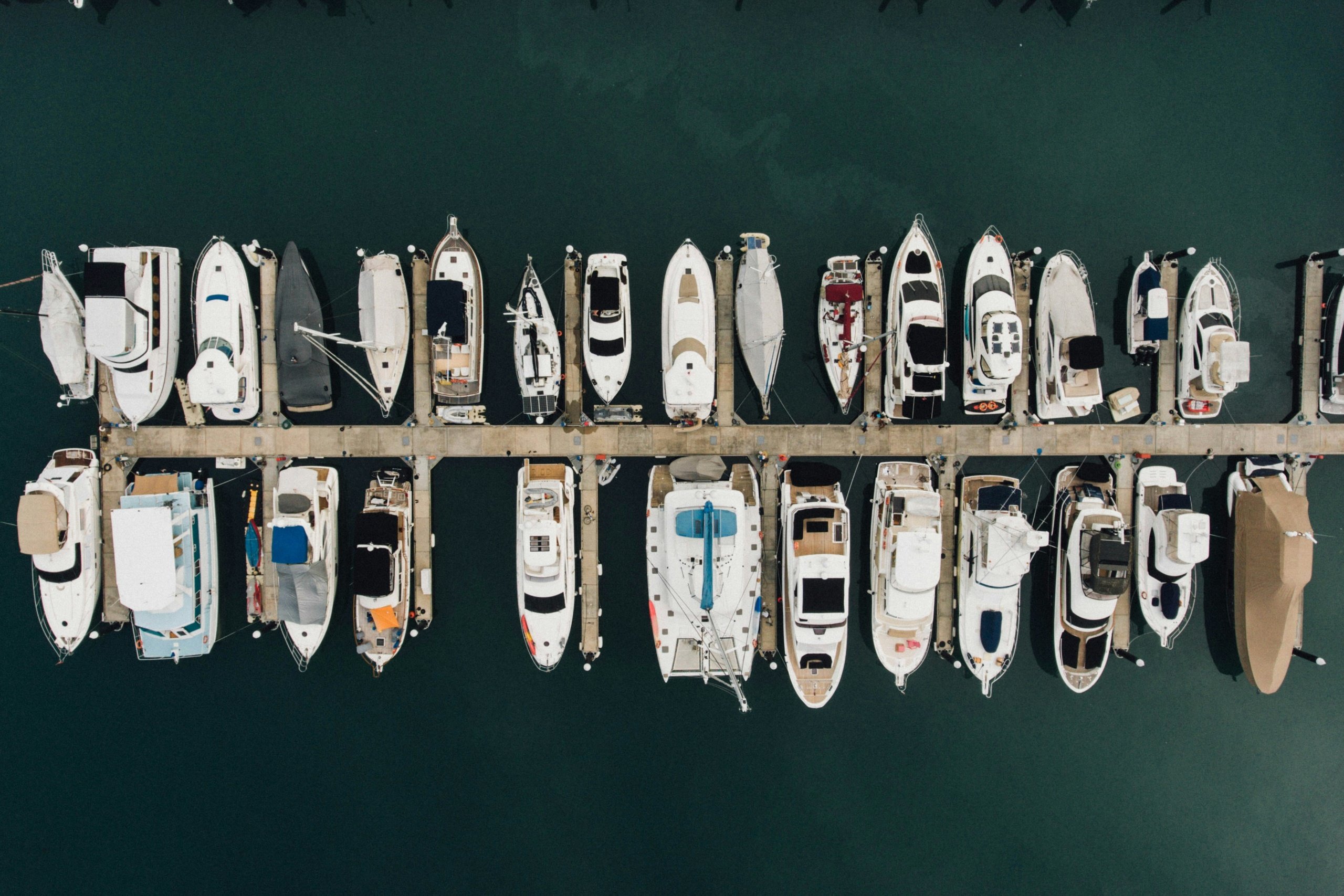If you’ve ever wondered whether you can take the helm of a pontoon boat without any prior boating experience, you’re not alone. Many adventure seekers and water enthusiasts are eager to explore the open waters but may be hesitant due to their lack of experience. In this article, we’ll explore the possibilities of operating a pontoon boat, providing insights and tips that will help beginners navigate their way to an unforgettable boating experience. So, if you’ve been dreaming of cruising along picturesque lakes or serene rivers, read on to discover how you can make your boating aspirations a reality, even without any prior boating experience.

Understanding Pontoon Boats
What is a pontoon boat?
A pontoon boat is a type of watercraft that has a flat bottom and is supported by two or more pontoons, or cylindrical tubes, which are typically made of materials such as aluminum. These pontoons provide the buoyancy and stability needed for the boat to float on the water. Pontoon boats are known for their spacious and open deck layout, making them ideal for recreational activities such as cruising, fishing, and socializing on the water.
Advantages of pontoon boats
Pontoon boats offer several advantages that make them a popular choice among boaters. Firstly, their wide beam and flat deck design provide ample space for passengers and cargo, allowing for a comfortable and versatile boating experience. The open layout also makes it easier to move around the boat and engage in various activities while on board. Additionally, the stability provided by the pontoons makes pontoon boats less prone to tipping or tilting, ensuring a safer and more secure ride for everyone on board. Lastly, pontoon boats are relatively easy to operate, making them a great option for beginners and those with little to no boating experience.
Common uses of pontoon boats
Pontoon boats can be utilized for a wide range of activities, both in calm inland waters and coastal environments. Some common uses of pontoon boats include:
-
Recreation and leisure: Pontoon boats serve as a versatile platform for recreational activities such as cruising, swimming, sunbathing, and picnicking. Their spacious deck layout allows for hosting gatherings and entertaining friends and family on the water.
-
Fishing: The stability, open space, and ease of maneuverability make pontoon boats excellent for fishing. Anglers can customize their pontoon boats with fishing accessories such as rod holders, livewells, and trolling motors to enhance their fishing experience.
-
Watersports: Pontoon boats can be equipped with tow bars or wakeboard towers, allowing for exciting watersports activities like tubing, wakeboarding, and skiing. Their stability makes them suitable for towing multiple riders at once.
-
Sightseeing and cruising: Pontoon boats are great for leisurely cruises, allowing passengers to enjoy the scenic beauty of rivers, lakes, and coastal areas. Their comfortable seating and spacious deck offer an excellent platform for sightseeing adventures.
Legal Requirements and Safety Measures
Licensing and registration
Before operating a pontoon boat, it is important to familiarize yourself with the legal requirements of your jurisdiction. In many countries, including the United States, a boating license or boating safety certificate may be required, depending on the age of the operator and the size of the boat. Additionally, pontoon boats, like all motorized watercraft, must be registered with the relevant authorities and display the assigned registration number and validation decals on the bow of the boat. It is essential to adhere to these licensing and registration requirements to ensure compliance with the law and promote safe boating practices.
Boating safety courses
While not always mandatory, taking a boating safety course is highly recommended, especially for those without prior boating experience. These courses provide valuable knowledge and skills that can help you navigate and operate your pontoon boat safely. Boating safety courses cover a wide range of topics, including navigation rules, emergency procedures, and basic boat handling techniques. By enrolling in a boating safety course, you can gain confidence, improve your understanding of boating regulations, and enhance the safety of yourself and others on the water.
Safety equipment required
To ensure the safety of everyone on board a pontoon boat, specific safety equipment must be present and in good working condition. The exact requirements may vary depending on the jurisdiction, but some common safety equipment includes:
-
Personal Flotation Devices (PFDs): PFDs, also known as life jackets, are the most crucial piece of safety equipment. It is important to have an adequate number of Coast Guard-approved PFDs on board, suitable for each passenger’s age and size. Additionally, having throwable flotation devices, such as ring buoys or cushions, is recommended.
-
Fire Extinguishers: Pontoon boats equipped with an engine or fuel systems typically require a fire extinguisher on board. It is essential to ensure that the fire extinguisher is easily accessible and in proper working condition.
-
Visual Distress Signals: Depending on the boating location and the boat’s size, visual distress signals might be required. These signals, such as flares or orange smoke signals, can help attract attention in case of an emergency.
-
Navigation Lights: Pontoon boats must have functioning navigation lights for safe operation during low visibility conditions or at night. These lights include red and green sidelights and a white stern light.
-
Sound-Producing Device: A horn or whistle is required to signal your presence and alert other boaters of your intentions.
It is important to familiarize yourself with the specific safety equipment requirements in your area and ensure that all the necessary equipment is present and in good condition before heading out on the water.
Basic Operation and Controls
Steering a pontoon boat
Steering a pontoon boat is relatively straightforward. Most pontoon boats are equipped with a helm or steering console located at the front of the boat, which includes a steering wheel. To steer the boat, simply turn the steering wheel in the desired direction. Remember that pontoon boats have a larger turning radius compared to smaller vessels, so it is important to anticipate your maneuvers and make gradual turns.
Throttle and propulsion
Pontoon boats are typically powered by outboard engines, which are located at the stern of the boat. To control the speed and direction of the boat, pontoon boats are equipped with a throttle. Pushing the throttle forward will increase the boat’s speed, while pulling it back will decelerate or reverse the boat. It is important to familiarize yourself with the throttle controls and practice controlling the speed and direction of the boat in open water before venturing into more crowded areas.
Navigation and maneuvering
When navigating a pontoon boat, it is important to be aware of your surroundings and practice good seamanship. Keep an eye on other boats, swimmers, and potential hazards in the water. Maintain a safe distance from other vessels and follow the navigation rules and regulations of your boating area. When maneuvering, it is important to use caution, especially when docking or operating in tight quarters. Take into account the size and handling characteristics of your pontoon boat and make adjustments accordingly. Practice docking and maneuvering techniques in a controlled environment to build confidence and ensure you can handle your boat safely and efficiently.
Understanding Water Conditions
Effects of wind and current
Understanding the effects of wind and current is essential for safe pontoon boat operation. Wind can significantly impact the handling and maneuverability of the boat, especially when docking or navigating in open water. Strong winds can push the boat off course, making steering more challenging. Currents, whether in a river or coastal area, can also influence the boat’s direction and speed. It is important to take these factors into account and make appropriate adjustments to your speed and course to maintain control and navigate safely.
Lake vs. river vs. ocean
Different water bodies present unique challenges and considerations for pontoon boat operators. Lakes, with their generally calm and predictable conditions, offer a great environment for novice boaters. They are usually less affected by strong currents or large waves, providing a stable and enjoyable boating experience. Rivers, on the other hand, often have variable current speeds and require careful navigation to avoid hazards such as rocks or submerged objects. Boating on the ocean requires additional considerations due to the presence of tides, offshore winds, and potentially rougher sea conditions. It is important to adapt your boating skills and knowledge to different water environments to ensure a safe and enjoyable experience.
Weather considerations
Prior to going out on the water, it is important to check the weather forecast and consider any potential weather changes that may occur during your boating adventure. Severe weather conditions such as thunderstorms, strong winds, or heavy rain can pose serious risks for pontoon boat operators. It is advisable to avoid boating in adverse weather conditions and always prioritize your safety and the safety of your passengers. Additionally, be aware of changing weather patterns and be prepared to return to shore if conditions deteriorate unexpectedly.

Docking and Mooring
Approaching a dock
Docking a pontoon boat requires careful planning and attention to detail. When approaching a dock, it is important to assess the wind direction and current to determine the best approach angle. Taking into account the size and maneuverability of your boat, plan a path that allows for a controlled approach to the dock. Reduce your speed and gradually bring the boat parallel to the dock. Use reverse thrust or a combination of forward and reverse thrust to slow down and position the boat alongside the dock.
Docking techniques
Various docking techniques can be employed depending on the specific conditions and layout of the dock. One common docking technique is the “sideways approach,” where the boat is brought alongside the dock parallel to its length. Another technique is the “parallel docking,” which involves approaching the dock at an angle and using forward and reverse thrust to align the boat with the dock. Additionally, utilizing dock lines and fenders is crucial for a successful docking experience. Dock lines can be used to secure the boat to the dock, while fenders provide a cushioning effect and protect the boat from contact with the dock structure.
Securing the boat
Once the boat is safely docked, it is important to secure it properly to prevent it from drifting or sustaining damage. Use adequate dock lines to tie the boat securely to the dock, ensuring that the lines are properly fastened and have enough slack to accommodate fluctuations in water levels. Utilize fenders to protect the boat from contact with the dock and adjust them as needed. Regularly inspect the dock lines and fenders to ensure they are in good condition and replace them if necessary.
Anchoring and Weight Distribution
Using an anchor
Anchoring allows pontoon boat operators to stop and secure the boat in a specific location. Before anchoring, it is important to assess the depth of the water and the bottom conditions to ensure a suitable anchor hold. Lower the anchor slowly and let out enough anchor line or chain to provide sufficient scope, which refers to the ratio between the length of anchor line and the depth of the water. Once the anchor has been deployed, slowly reverse the boat to ensure the anchor has set securely. Always check the anchor periodically to ensure it is holding and adjust the position as necessary.
Choosing the right anchor
Selecting the appropriate anchor for your pontoon boat is crucial for ensuring a secure hold. The ideal anchor type will depend on various factors such as the size and weight of your boat, the bottom conditions of the water, and the prevailing weather conditions. Some commonly used anchor types for pontoon boats include fluke (Danforth) anchors, plow (CQR) anchors, and mushroom anchors. It is recommended to choose an anchor that is specifically designed for the size and weight of your boat and consult with boating experts or anchor manufacturers for guidance in selecting the right type.
Weight distribution for stability
Proper weight distribution is essential for maintaining stability and safety on a pontoon boat. Ensure that heavy items, such as coolers or equipment, are balanced from side to side and distributed evenly throughout the boat. Uneven weight distribution can cause the boat to list to one side, affecting stability and maneuverability. Additionally, be mindful of the maximum passenger and cargo capacity specified by the manufacturer, and avoid overloading the boat. Understanding and adhering to weight distribution guidelines contribute to a safer and more comfortable boating experience.

Navigational Rules and Markers
Understanding buoys and markers
Buoys and markers play a vital role in navigational safety, helping boaters identify channels, hazards, and restricted areas. Buoys can be either navigational aids or regulatory markers and are often color-coded and numbered to indicate their purpose and the type of watercraft that should navigate near them. Red buoys are typically used to mark the right (starboard) side of a channel or a hazard, and green buoys mark the left (port) side. Yellow buoys may indicate a restricted zone or cautionary area. Familiarize yourself with the specific buoys and markers in your boating area to navigate safely and avoid potential dangers.
Right-of-way rules
Understanding right-of-way rules is essential for safe navigation and to avoid collisions on the water. In general, pontoon boats should abide by the following right-of-way rules:
- When two power-driven vessels approach each other head-on, both boats should alter their course to starboard (right) and pass each other safely.
- When crossing paths with another power-driven vessel, the boat on the right has the right of way, while the boat on the left should yield and steer clear.
- Sailboats, kayaks, and canoes typically have the right of way over power-driven vessels. It is important to give way and maintain a safe distance when encountering these types of watercraft.
- When approaching a larger vessel or commercial traffic, it is advisable to yield and give them plenty of space to maneuver.
Always exercise caution, maintain a proper lookout, and communicate with other boaters to ensure safe navigation and adherence to right-of-way rules.
Boating navigation signs
Navigation signs play a crucial role in providing information and guidance to boaters. These signs are often displayed at marinas, docks, and high-traffic boating areas. They can provide information on speed limits, restricted zones, no-wake areas, and other important rules and regulations. It is essential to familiarize yourself with the meaning and significance of different navigation signs in your boating area. Understanding and obeying these signs contribute to safe and responsible boating practices.
Emergency Preparedness
Safety procedures and protocols
Being prepared for emergencies is vital to ensure the safety of everyone on board a pontoon boat. Establishing safety procedures and protocols with your passengers can help mitigate risks and address potential emergencies efficiently. Ensure that all passengers are familiar with the location and usage of safety equipment such as life jackets, fire extinguishers, and distress signals. Assign specific roles and responsibilities in case of an emergency, such as designating a person in charge of operating the VHF radio or calling for assistance. Regularly conduct safety drills and briefings with your passengers to ensure everyone knows what to do in case of an emergency.
Dealing with engine failure
Engine failure can be a stressful situation, but remaining calm and following a few simple steps can help you handle it effectively. Firstly, ensure that all passengers are aware of the situation and wearing their life jackets. If you are unable to restart the engine, drop anchor to prevent drifting. Use your radio, mobile phone, or any available communication device to call for assistance and provide your location. Display distress signals if necessary. If you are in immediate danger, remember to prioritize your safety and the safety of your passengers. Be prepared to deploy emergency flotation devices or abandon ship, if required.
Handling emergencies on water
In addition to engine failure, other emergencies can arise while on the water. Examples include medical emergencies, fire incidents, severe weather changes, or collisions. It is essential to be prepared to handle unforeseen situations and have a plan in place. If a medical emergency occurs, contact emergency medical services for assistance and provide first aid if you are trained to do so. In case of a fire, extinguish the flames if safe to do so and call for assistance. When encountering severe weather changes, seek shelter and follow weather updates. Collisions can be avoided by maintaining a proper lookout and adhering to navigation rules. Always prioritize the safety of all individuals on board and take necessary actions to ensure their well-being.
Boating Etiquette and Considerations
Respecting other boaters
Respecting other boaters and maintaining proper etiquette is crucial for fostering a safe and enjoyable boating environment. Always operate your pontoon boat in a responsible manner, avoiding excessive speed, wake jumping, or creating unnecessary noise. Be mindful of other vessels and give way when necessary. Remember that not all boaters may have the same level of experience or familiarity with navigational rules, so exercise patience and communicate clearly. Minimize your impact on the environment by properly disposing of trash and avoiding pollution of the waterways. By respecting other boaters, you contribute to a positive boating community and help ensure a pleasurable experience for everyone.
Environmental awareness
As a boater, it is important to be environmentally conscious and contribute to the preservation of water ecosystems. Avoid discharging any pollutants, including oil, fuel, or sewage, into the water. Properly dispose of trash and recycling materials when back on land. Be mindful of wildlife and their habitats, keeping a safe distance and avoiding disturbance. Additionally, follow designated boating channels and avoid shallow areas to protect submerged vegetation and wildlife. By practicing environmental awareness, you can help preserve the beauty and integrity of our waterways for future generations to enjoy.
Noise and speed restrictions
Many boating areas have specific noise and speed regulations in place to maintain a peaceful and safe environment for all users. Ensure that your pontoon boat complies with noise restrictions by adhering to decibel limits imposed by local authorities. Excessive noise can disrupt wildlife, disturb other boaters, and damage the tranquility of natural areas. Additionally, be aware of any speed limits in effect and operate your pontoon boat at a safe and reasonable speed. Adjust your speed accordingly in congested areas, near swim zones, or where restricted by buoys or markers. By respecting noise and speed restrictions, you help create a harmonious and enjoyable boating atmosphere.
Additional Resources
Boating education programs
Boating education programs provide valuable knowledge and skills to enhance your boating experience and promote safety on the water. These programs, often offered by governmental agencies, boating safety organizations, or local boating associations, cover a wide range of topics such as boating regulations, navigation rules, and emergency protocols. By enrolling in a boating education program, you can gain a deeper understanding of boating best practices and receive certification or endorsements that may be required in your jurisdiction.
Boating safety organizations
Various boating safety organizations exist to promote boating safety, provide resources, and advocate for responsible boating practices. These organizations may offer boating safety courses, produce educational materials, and provide information on boating regulations and navigational requirements. Examples of well-known boating safety organizations include the United States Power Squadrons (USPS), United States Coast Guard Auxiliary (USCGA), and the National Safe Boating Council (NSBC). Utilizing the resources and services offered by these organizations can help you stay informed and up to date with the latest boating safety practices.
Pontoon boat rental options
If you are interested in experiencing pontoon boating but do not yet own a pontoon boat, renting one is a convenient option. Many marinas and boat rental companies offer pontoon boats for rent on an hourly, daily, or weekly basis. Renting a pontoon boat allows you to enjoy all the benefits of pontoon boating without the commitment of ownership. During the rental process, familiarize yourself with the specifics of the rental agreement, safety protocols, and any additional requirements imposed by the rental company. Rental options provide an accessible and flexible way to indulge in pontoon boating and enjoy the water with friends and family.
In conclusion, understanding pontoon boat operation, safety measures, and water conditions are essential for a safe and enjoyable boating experience. By familiarizing yourself with the basics of operating a pontoon boat, including steering, throttle control, and navigation rules, you can confidently take to the water. Adhering to legal requirements such as licensing, registration, and safety courses ensures compliance with boating regulations and promotes responsible boating practices. Considering water conditions, weather factors, and understanding the nuances of docking, mooring, and weight distribution contribute to a smoother and safer boating experience. Embracing boating etiquette, environmental awareness, and proper emergency preparedness promotes a harmonious boating community and prioritizes the well-being of all individuals on the water. By utilizing the available resources, such as boating education programs, safety organizations, and pontoon boat rentals, you can continue to expand your knowledge and proficiency as a pontoon boat operator. With a friendly demeanor and a commitment to safety, you can confidently embark on your pontoon boat adventures and create lasting memories on the water.





